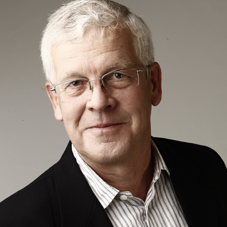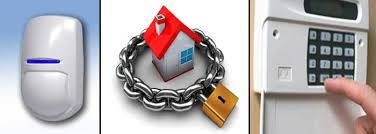The development of intelligent, connected products are radically transforming our operations and how we compete. 
Michael Porter for decades has been the the world’s most successful and influential business strategist. He has a unique ability to absorb complex events and explain them in a way that makes us understand and act on them.

By Eskil Swende, IRM Sweden. Eskil will be speaking on Developing your Business Architecture towards Digitalization and IoT at IRM UK’s co-located conferences BPM Conference Europe 2016 and EA Conference Europe 2016, 13-16 June, London
What is happening? Fundamental technological development has given us inexpensive sensors with simple connections that, within a few years, there are already 20 billion of them.
Our home alarms will be developed not only to report and prevent burglaries and fire. For example, a sensor in our dishwasher can report the beginning of a leak, and we can allow a plumber in without being at home ourselves to fix the problem. Insurers will be happier because water damage is very expensive to regulate.
What are the radical changes?
- New business models with new products and new value propositions to the customer
- New business processes or radical changes in existing business processes
- Data and information will be handled as a central resource in your business
New Business Models
The fundamental difference, according to Porter, is the relationships with customers. It will become continuous and will therefore be never ending.
 The product characteristics will change. It will be able to self-report how it feels, for example our car can call an ambulance if a serious accident has occurred. The product can also be controlled by its users. New improvements can be continuously delivered. For example our home alarms will be provided access to a new sensor to the dishwasher without resource-intensive installations. The product will become autonomous as it will be able to teach itself, serve itself and operate on its own.
The product characteristics will change. It will be able to self-report how it feels, for example our car can call an ambulance if a serious accident has occurred. The product can also be controlled by its users. New improvements can be continuously delivered. For example our home alarms will be provided access to a new sensor to the dishwasher without resource-intensive installations. The product will become autonomous as it will be able to teach itself, serve itself and operate on its own.
The New Business Processes
Our business processes can be divided into operational processes, infrastructure processes and innovation processes.
Operational Processes
Deliveries will change radically from delivering once to deliver continuously. Sales will be focused on creating a long lasting customer relationship. Data and information will be important, and we will continuously need to know the status of the customer installation.
Infrastructure processes
The development of standards for products and the value propositions are very important to allow on-going product development without costly retrofits. Keep it simple and avoid complexity. Follow the developments of international standards and use them whenever possible.
Establish an infrastructure for the information resource, where all data can be acquired only once. That is, the same data about the customer, the product, delivery, etc. are acquired only once and made available in your own business and to your customer.
Innovation processes
We see two different types of innovation processes. Either we can streamline existing business processes or we can develop totally new “disruptive” processes. In both cases, we can use the Business Model Canvas, developed by Alexander Osterwalder, which in a few years has reached global acceptance. The disruptive innovation rarely happens in existing operations, but in smaller “start-up” companies. Minecraft is a good Swedish example. In a few years, they developed a digital LEGO with a group of only 30’s employees.
Information – a core resource
Information now stands on par with people, technology, and capital as a core asset and in many organisations it is becoming the most crucial asset. The American information strategist Steve Hoberman claims that Sweden has as many information modelers, as the rest of the world together! The next step is to raise the quality of the models so they become more useful and used!
Develop your competence and capability to plan, analyze and use the information resource. Porter’s warning of increased complexity should be taken very seriously. Try to be proactive. Do not wait until the complexities hurt your business! A main factor to avoid new complexity in your digital business is to carefully distinguish between master data and the event data.
New forms of organization based on autonomous groups
Porter criticizes hierarchical organizations, but suggests no alternative. In Sweden we have introduced self-management and independent agile development teams. Spotify base their organization on 100’s independent groups in three time zones. Such agile organizations create the speed required in a digital development.
Read and reflect on Porters article
When reviewing the article, eskil has tried to adapt the Porter analysis to Scandinavian conditions and experiences. The Business Model Canvas launched in 2009 by the Swiss innovator Alexander Osterwalder is also a key factor for success in the digital transformation. To fully grasp the knowledge and the message in Michael Porter’s article “How Smart, Connected Products Are Transforming Competition” at hbr.org requires a number of hours of study – but well spent hours!
Eskil Swende is one of the main partners at IRM Sweden, a Scandinavian consulting company focusing on Enterprise Architecture and the Innovation Process. He is also a partner of IRM UK in London. Eskil is President of DAMA Chapter Scandinavia and has developed a global wisdom network of leading experts, inviting them to give presentations and tutorials in Scandinavia. He can be contacted at eskil.swende@irm.se


